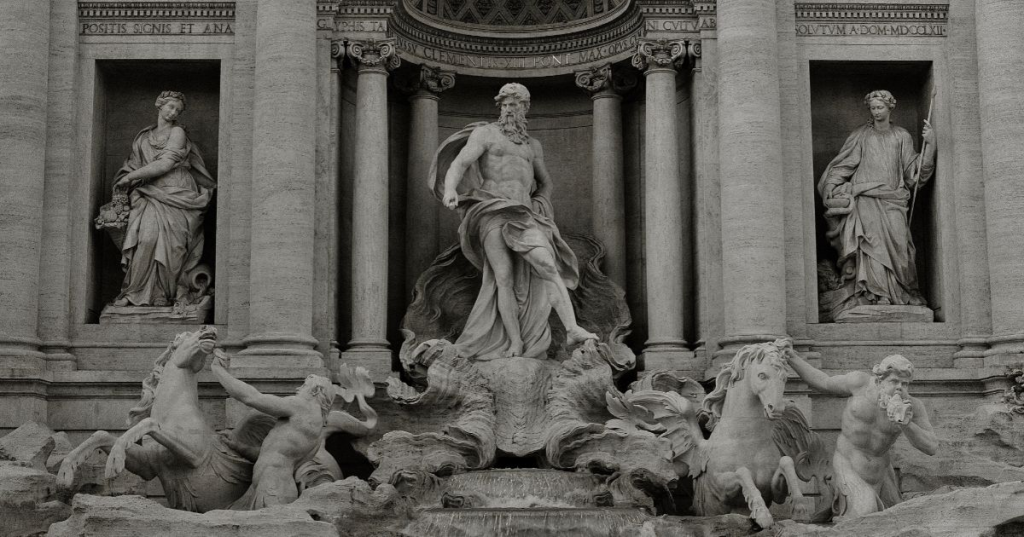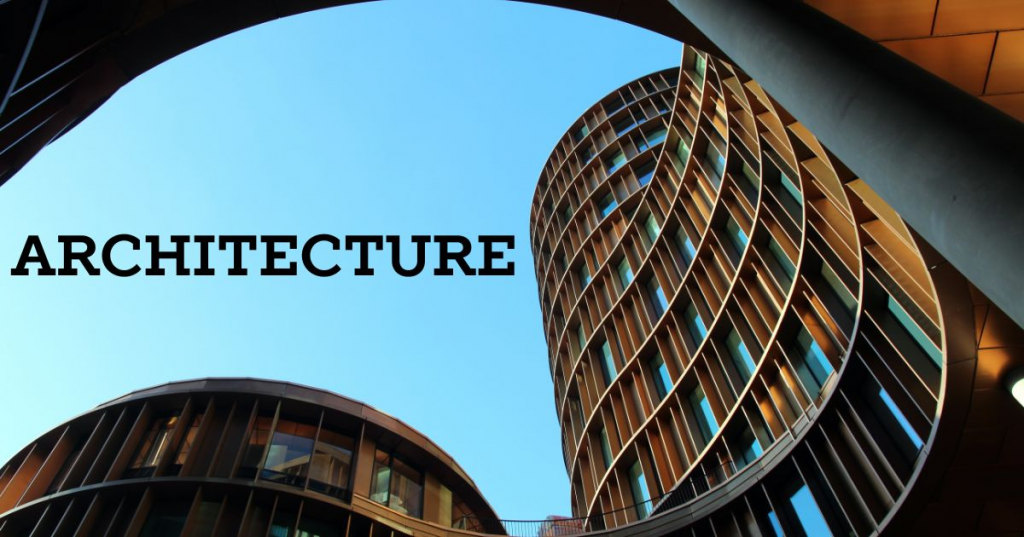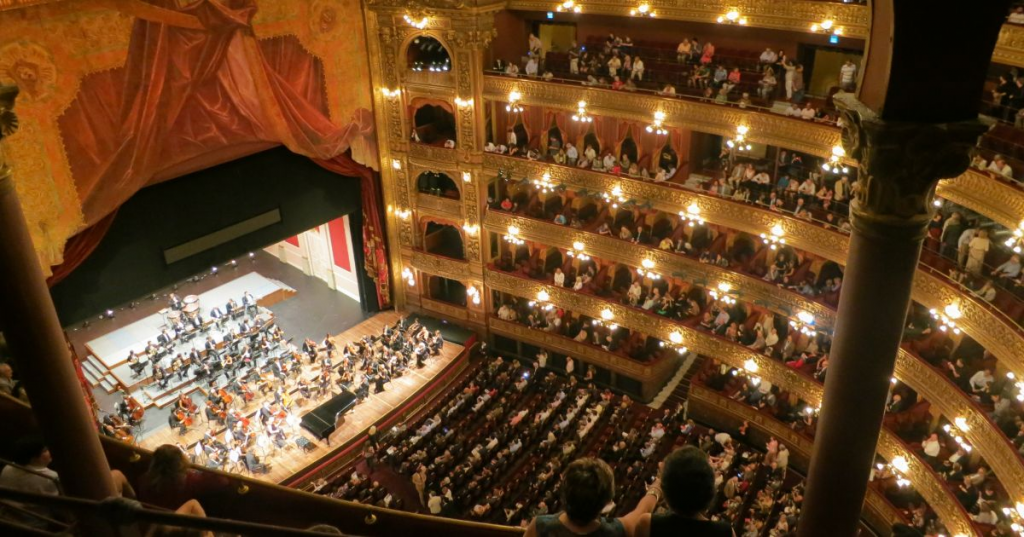What Are the 7 Different Forms of Art?
Art, in its many forms, has been a fundamental aspect of human expression and culture throughout history. It serves as a reflection of our collective experiences, emotions, and thoughts, transcending language and time. Among the myriad ways humans create and appreciate art, seven distinct forms have emerged as the most influential and widespread: painting, sculpture, literature, architecture, cinema, music, and theater. Each of these art forms offers unique methods and mediums for artists to communicate their vision and for audiences to engage with the world around them. This article explores the seven different forms of art, delving into their historical significance, defining characteristics, and enduring impact on society.
Painting - One of the Oldest Art Forms

Painting is one of the oldest and most versatile forms of art. It spans many styles, techniques, and purposes, each contributing to the rich tapestry of human expression and cultural heritage.
Historical Context
Painting dates back to prehistoric times, with the earliest known examples being cave paintings created around 40,000 years ago. These ancient works in locations such as Lascaux, France, Altamira, and Spain depict animals, human figures, and abstract symbols, offering insights into early human life and beliefs.
Throughout history, painting has evolved through various periods and styles. Ancient Greeks and Romans used painting for decoration, storytelling, and religious purposes in classical antiquity, employing techniques such as fresco and encaustic.
During the Middle Ages, religious themes dominated medieval painting, with illuminated manuscripts and icons reflecting the spiritual life of the time. The Renaissance marked a revival of classical ideals, emphasizing realism, perspective, and humanism, with artists like Leonardo da Vinci, Michelangelo, and Raphael creating masterpieces that remain influential today.
The Baroque and Rococo periods are characterized by dramatic lighting, movement, and ornate, decorative qualities. The 19th century saw movements like Romanticism, Realism, and Impressionism, with artists such as J.M.W. Turner, Gustave Courbet, and Claude Monet breaking new ground.
The 20th century brought modern art with styles like Cubism, Surrealism, Abstract Expressionism, and Pop Art, featuring artists like Pablo Picasso, Salvador Dalí, Jackson Pollock, and Andy Warhol pushing the boundaries of painting.
Techniques and Mediums
Painting techniques and mediums vary widely, each offering unique possibilities for expression.
Oil painting, known for its versatility and rich colors, uses pigments mixed with oil, allowing for blending and layering to create depth and texture, as seen in the works of Rembrandt and Vincent van Gogh.
Watercolor has a transparent and luminous quality, which is often used for landscapes and delicate subjects. It is exemplified by J.M.W. Turner and John Singer Sargent.
Meanwhile, acrylic paint is fast-drying and versatile, capable of mimicking both oil and watercolor techniques, and is widely used by contemporary artists for its durability and vibrant colors.
Besides, Fresco, a technique for mural painting on freshly laid lime plaster, has been employed since antiquity, famously by Michelangelo on the Sistine Chapel ceiling.
Finally, ink painting, traditional in East Asian art, emphasizes brushwork and calligraphy, as demonstrated in the works of Chinese and Japanese masters.
Purposes and Themes
Painting serves various purposes, from personal expression to social commentary. Religious and mythological themes, especially in historical contexts, aim to inspire devotion and convey moral lessons. Portrait painting captures the likeness and personality of individuals, immortalizing figures from history, royalty, and everyday life.
Landscape painting explores the beauty of natural scenery, reflecting the artist’s interpretation of the environment. Abstract painting breaks away from representational forms, focusing on color, shape, and texture to evoke emotions and ideas. Some paintings address social issues, political events, and cultural movements, offering critiques and raising awareness.
Influential Artists
The history of painting is marked by countless influential artists whose work has shaped the art world.
Leonardo da Vinci is renowned for his technical mastery and iconic works like the Mona Lisa and The Last Supper. Michelangelo, celebrated for his contributions to Renaissance art, gained particular acclaim for his frescoes in the Sistine Chapel. Vincent van Gogh is well known for his expressive use of color and impassioned brushwork; we can see that in Starry Night. Pablo Picasso, a pioneer of Cubism and modern art, spans various styles and innovations. Frida Kahlo and her deeply personal symbolic self-portraits that explored suffering.
Painting remains a dynamic and evolving form of art, continuously offering new ways for artists to express their vision and for audiences to engage with the world. From its ancient origins to contemporary innovations, painting reflects the diversity and richness of human creativity, making it an enduring and essential aspect of cultural heritage.
Sculpture - Three-Dimensional Expression

Sculpture, the art of creating three-dimensional forms, is a powerful medium that has graced human history for millennia. From prehistoric carvings to towering modern installations, sculpture allows artists to express themselves tangibly, breathing life into space and captivating viewers with form, texture, and story.
Historical Context
Sculpture has a long and rich history, dating back to prehistoric times. The earliest known sculptures, such as the Venus figurines, were created around 30,000 years ago and often depicted human forms.
Ancient civilizations like the Egyptians, Greeks, and Romans used sculpture extensively in their architecture, religion, and daily life. Egyptian sculpture, for instance, was characterized by its highly stylized and symbolic nature, with monumental statues of pharaohs and gods. On the other hand, Greek sculpture celebrated the human form and emphasized naturalism and idealized beauty, as seen in the works of Phidias and Praxiteles. Roman sculpture borrowed heavily from Greek traditions but also focused on realism, particularly in portraiture.
During the Middle Ages, sculpture was predominantly religious, with cathedrals adorned with intricate reliefs and statues depicting biblical scenes and saints. The Renaissance period marked a revival of classical ideals, with artists like Michelangelo and Donatello pushing the boundaries of the medium to achieve unprecedented levels of detail and expression. In the modern era, sculpture has continued to evolve, with movements like Abstract Expressionism and Minimalism challenging traditional notions and exploring new materials and techniques.
Techniques and Mediums
Sculpture encompasses a variety of techniques and materials, each offering distinct possibilities for artistic expression:
Carving: This subtractive technique removes material from a solid block, such as stone, wood, or marble. Carving requires precision and skill, as seen in Michelangelo's David, a masterpiece of marble sculpture.
Modeling: In this additive process, materials like clay, wax, or plaster are shaped and built up to create a form. Modeling is often used for creating maquettes or preliminary models, which can be later cast in more durable materials.
Casting: This technique creates a mold of the original model and pours materials like bronze, iron, or resin into the mold to produce a final sculpture. The bronze casting process was perfected by the ancient Greeks and remains popular today.
Assembling: Also known as construction, this method combines different materials, such as metal, wood, and found objects, to create a sculpture. Assemblage became prominent in the 20th century, with artists like Pablo Picasso and Marcel Duchamp exploring this technique.
Relief: A relief sculpture is carved or modeled from a flat surface, creating a raised or sunken design. It can be high relief, where the forms project significantly from the background, or low relief, where the projection is shallow. The Parthenon's friezes are famous examples of high-relief sculpture.
Purposes and Themes
The sculpture serves a variety of purposes and explores numerous themes.
Throughout history, sculpture has been used to create religious icons, altars, and ceremonial objects. These works often embody spiritual beliefs and practices, as seen in Hindu temple carvings and Buddhist statues.
Sculptures often serve to honor and remember historical events, prominent figures, and significant achievements. Monuments, such as the Statue of Liberty and Mount Rushmore, serve as enduring symbols of cultural and national identity.
Modern and contemporary sculptors explore abstract and conceptual themes, focusing on form, space, and ideas rather than representational accuracy. Artists like Henry Moore and Barbara Hepworth have created iconic abstract sculptures that challenge traditional perceptions.
Moreover, many sculptures are designed for public spaces, enhancing urban environments and engaging communities. Public art can be interactive and thought-provoking, inviting viewers to contemplate and interact with the work.
Influential Sculptors
The history of sculpture is marked by numerous influential artists who have shaped the field.
Michelangelo is renowned for his mastery of marble. Michelangelo's works like David and the Pietà are celebrated for their anatomical precision and emotional depth.
Auguste Rodin is considered the father of modern sculpture. Rodin's expressive works, such as The Thinker, broke away from traditional forms and emphasized movement and emotion.
Henry Moore, recognized for his monumental abstract forms, frequently explores the relationship between the human body and natural landscapes through his sculptures.
Louise Bourgeois' work delves into themes of memory, trauma, and identity, with her spider sculptures becoming iconic symbols of her exploration of the human psyche.
From its ancient origins to contemporary innovations, sculpture continues to captivate and inspire, reflecting the diverse experiences and aspirations of humanity. Whether through monumental public works or intimate, intricate pieces, sculpture invites us to engage with the physical world in profound and meaningful ways.
Literature - Written Expression

Literature, the art of written words, is a vast and vibrant realm that has captivated humanity for centuries. It encompasses a rich tapestry of genres, styles, and voices, offering a powerful medium for storytelling, expression, and exploration of the human experience.
Historical Context
The history of literature dates back to the earliest civilizations, where storytelling and written records played crucial roles in preserving cultural heritage and knowledge. Ancient literary traditions include the epic tales of Mesopotamia, such as the "Epic of Gilgamesh," and the rich oral traditions of ancient Greece, which gave rise to works like Homer's "Iliad" and "Odyssey."
In ancient times, literature was often intertwined with religion and mythology. The Vedas of India, the Bible, and the Quran are prime examples of religious texts that have had profound impacts on cultures and societies. Ancient Greek and Roman literature, including the works of playwrights like Sophocles and poets like Virgil, explored themes of heroism, tragedy, and the human condition.
The Middle Ages saw the rise of courtly literature and religious texts, with notable works like "Beowulf," "The Divine Comedy" by Dante Alighieri, and Geoffrey Chaucer's "The Canterbury Tales." The Renaissance brought a revival of classical ideals and the flourishing of literature, with luminaries such as William Shakespeare, whose plays and sonnets remain timeless.
The subsequent centuries witnessed the emergence of new literary forms and movements. The Romantic period celebrated emotion, nature, and individualism, as seen in the poetry of Wordsworth and Keats. The 19th and 20th centuries introduced Realism, Modernism, and Postmodernism, with authors like Charles Dickens, James Joyce, and Gabriel García Márquez pushing the boundaries of narrative and style.
Genres and Forms
Literature encompasses a variety of genres and forms, each with its conventions and characteristics:
Poetry: Poetry is a form of literature that uses aesthetic and rhythmic qualities of language to evoke meanings beyond the prose's apparent meaning. It includes various styles such as sonnets, haikus, free verse, and epics. Poets like Emily Dickinson and Rumi have used this form to express profound insights and emotions.
Prose: Prose literature, composed in ordinary language, encompasses novels, short stories, and essays. Novels, such as those by Leo Tolstoy and Jane Austen, offer detailed narratives and complex characters, while short stories, like those of Edgar Allan Poe, provide concise and impactful tales.
Drama: Drama entails the portrayal of stories through dialogue and acting. Plays, ranging from ancient Greek tragedies to modern theater, are designed to be performed on stage. Notable playwrights include Shakespeare, Anton Chekhov, and Tennessee Williams.
Essays: Essays are short works of prose that explore a specific topic or idea. They can be argumentative, descriptive, or reflective and are often used to express the author's personal views. Writers like Michel de Montaigne and George Orwell have elevated the essay form to an art.
Non-Fiction: Non-fiction literature includes biographies, memoirs, historical accounts, and journalistic works. These texts provide factual information and insights into real events and individuals. Authors like Anne Frank and Malcolm X have contributed significantly to this genre.
Purposes and Themes
One of the primary functions of literature is to entertain readers. Stories, poems, and plays captivate audiences with their imaginative and engaging narratives.
Literature delves into the complexities of human emotions, relationships, and experiences. Themes of love, loss, identity, and morality are commonly explored, offering readers a deeper understanding of themselves and others.
Furthermore, literature educates by providing insights into different cultures, histories, and philosophies. It broadens readers' understanding of the world and encourages critical thinking.
Many literary works address social issues and provide commentary on political, economic, and cultural conditions. Authors like Charles Dickens and Fyodor Dostoevsky have used their writing to critique societal injustices.
Literary works preserve cultural heritage and traditions, passing down stories and values from generation to generation. Folklore, myths, and legends are key examples of this cultural preservation.
Influential Authors
The world of literature is rich with influential authors who have shaped the way we think and feel.
William Shakespeare holds the distinction of being the greatest playwright of all time. Shakespeare's works, including "Hamlet," "Macbeth," and "A Midsummer Night's Dream," have had a lasting impact on literature and theater.
Jane Austen is renowned for her astute observations of social manners and relationships. Her novels like "Pride and Prejudice" and "Emma" continue to resonate with readers.
Leo Tolstoy's epic novels, "War and Peace" and "Anna Karenina," explore profound philosophical and social themes, establishing him as one of the greatest novelists.
Gabriel García Márquez is recognized as a master of magical realism. "One Hundred Years of Solitude" blends the fantastical with the real, creating rich, imaginative worlds.
Toni Morrison's powerful narratives, including "Beloved" and "Song of Solomon," address complex themes of race, identity, and history, making her a pivotal figure in contemporary literature.
Literature provides a profound and lasting impact on society, offering insights, entertainment, and a deeper understanding of the human condition. From ancient epics to contemporary novels, literature's power to move, inspire, and educate continues to make it a vital part of our cultural heritage.
Architecture - The Art and Science of Building Design

Architecture, often described as the art and science of designing and constructing buildings, is a discipline that blends creativity, functionality, and technical expertise. It shapes the spaces where we live, work, and play, influencing our daily lives and reflecting the cultural and historical context of its time.
Historical Context
Architecture has a rich history that dates back to the earliest human civilizations. Each era and culture has contributed to the evolution of architectural styles and techniques, reflecting the values, beliefs, and advancements of their times.
Ancient Architecture
The ancient Egyptians are renowned for their monumental architecture, including the Pyramids of Giza and the temples of Luxor and Karnak. These structures, characterized by their massive scale and precise construction, were built as tombs and religious sites.
Ancient Greek architecture is celebrated for its emphasis on proportion, balance, and beauty. The Parthenon in Athens is a prime example, showcasing the use of columns and intricate detailing.
Roman architecture borrowed heavily from Greek precedents but introduced innovations such as the arch, the vault, and concrete construction. Iconic structures like the Colosseum and the Pantheon exemplify the grandeur and engineering prowess of Roman architecture.
Medieval Architecture
The Middle Ages saw the rise of Romanesque and Gothic architecture, primarily in the construction of churches and cathedrals. Romanesque buildings, like the Abbey of Cluny, featured thick walls, round arches, and sturdy pillars. Gothic architecture, as seen in Notre Dame de Paris, introduced pointed arches, ribbed vaults, and flying buttresses, allowing for taller structures and more intricate designs.
Renaissance Architecture
The Renaissance period marked a revival of classical principles, emphasizing symmetry, proportion, and geometry. Architects like Filippo Brunelleschi and Leon Battista Alberti drew inspiration from ancient Rome and Greece, as seen in structures like the Florence Cathedral and the Tempio Malatestiano.
Modern Architecture
The 20th century brought dramatic changes in architecture, with movements such as Modernism, Brutalism, and Postmodernism challenging traditional forms and embracing new materials and technologies. Architects like Le Corbusier, Frank Lloyd Wright, and Ludwig Mies van der Rohe introduced concepts like open floor plans, minimalism, and the integration of buildings with their natural surroundings.
Techniques and Materials
Architecture employs a variety of techniques and materials to create functional and aesthetically pleasing structures:
Techniques in architecture encompass a broad range of principles and practices that architects employ to design and construct buildings and structures.
Structural Engineering: Essential for ensuring the stability and safety of buildings, structural engineering includes calculating loads, forces, and the integrity of materials.
Sustainable Design: Modern architects increasingly focus on sustainability, using techniques like passive solar design, green roofs, and energy-efficient systems to reduce environmental impact.
Computer-Aided Design (CAD): CAD software revolutionizes architectural design, allowing for precise planning, visualization, and modification of building plans.
The choice of materials in architecture significantly influences how buildings function, appear, and contribute to sustainability.
Stone and Brick: Traditional materials like stone and brick have been used for millennia due to their durability and aesthetic appeal.
Concrete: Reinforced concrete allows for greater flexibility and strength, enabling the construction of larger and more complex structures.
Steel and Glass: The use of steel and glass has become synonymous with modern architecture, allowing for sleek, lightweight designs and extensive use of natural light.
Wood: Timber is experiencing a resurgence in contemporary architecture due to its sustainability and versatility.
Purposes and Functions
Architecture fulfills a diverse array of purposes, each tailored to specific functions and needs.
For residential spaces, architecture encompasses a spectrum from single-family homes to expansive apartment complexes. Here, the importance is creating environments that prioritize comfort, safety, and aesthetic appeal.
Commercial architecture serves the needs of businesses with designs that include office buildings, shopping centers, and hotels. These structures are crafted to facilitate efficient operations, enhance customer experiences, and integrate cutting-edge amenities and technologies.
Cultural architecture includes museums, theaters, and libraries, which are designed to inspire and engage the public. Often serving as landmarks within communities, these buildings reflect cultural identity and heritage through their architectural expressions and interior environments.
Religious architecture, such as churches, mosques, temples, and synagogues, is designed to provide spaces for worship and communal gatherings. These buildings often feature intricate details and symbolic elements that contribute to a sacred and reverential atmosphere, fostering spiritual experiences and community cohesion.
Influential Architects
The field of architecture has been shaped by many visionary architects who have left a lasting legacy.
Known for his organic architecture, Frank Lloyd Wright designed iconic buildings like Fallingwater and the Guggenheim Museum, integrating structures with their natural surroundings.
Le Corbusier, a trailblazer of Modernism, is known for his architectural achievements like Villa Savoye and the Unité d'Habitation. His works prioritize functionality, simplicity, and the integration of innovative materials.
Celebrated for her innovative and futuristic designs, Zaha Hadid's projects, like the London Aquatics Centre and the Guangzhou Opera House, showcase fluid forms and dynamic spaces.
Architecture is a multifaceted discipline that combines art, science, and technology to create spaces that enhance human life. As we move forward, sustainable and innovative design will continue to play a crucial role in shaping the built environment, ensuring that architecture remains functional and inspiring for future generations.
Cinema - The Art of Moving Images

Cinema, also known as film or the movies, is a powerful and influential art form that combines storytelling, visual art, music, and performance to create immersive experiences for audiences. Since its inception in the late 19th century, cinema has evolved into a global phenomenon, reflecting and shaping cultural, social, and political landscapes.
Historical Context
The history of cinema begins with the invention of motion picture technology in the late 1800s. Early pioneers like Thomas Edison and the Lumière brothers developed the first motion picture cameras and projectors, leading to the birth of the film industry.
Silent Era (1890s-1920s)
The silent era was characterized by films without synchronized sound, relying on visual storytelling, title cards, and live musical accompaniment. Iconic figures like Charlie Chaplin and Buster Keaton emerged, with films such as "The Gold Rush" and "The General" showcasing their comedic genius and innovative use of physical comedy.
Golden Age of Hollywood (1920s-1960s)
The transition to sound in the late 1920s revolutionized cinema, with "The Jazz Singer" (1927) being the first feature-length film with synchronized dialogue. The Golden Age of Hollywood saw the rise of major studios like MGM, Warner Bros., and Paramount, producing classics like "Gone with the Wind," "Casablanca," and "Citizen Kane." This period was marked by the dominance of the studio system, star-driven films, and the emergence of genres like film noir, musicals, and westerns.
International Cinema
While Hollywood dominated global cinema, significant movements emerged worldwide. Italian Neorealism, with directors like Federico Fellini and Roberto Rossellini, focused on the lives of ordinary people post-World War II.
French New Wave, led by Jean-Luc Godard and François Truffaut, broke traditional cinematic conventions with experimental techniques and narrative styles. Japanese cinema, exemplified by Akira Kurosawa's "Rashomon" and Yasujiro Ozu's "Tokyo Story," gained international acclaim for its profound storytelling and visual artistry.
New Hollywood (1960s-1980s)
The decline of the studio system in the 1960s led to the rise of New Hollywood, characterized by greater creative freedom and the emergence of auteur directors. Filmmakers like Martin Scorsese, Steven Spielberg, and Francis Ford Coppola produced groundbreaking films such as "Taxi Driver," "Jaws," and "The Godfather," which pushed the boundaries of storytelling, themes, and technical innovation.
Contemporary Cinema (1990s-Present)
The advent of digital technology has transformed filmmaking, making it more accessible and allowing for unprecedented special effects. Blockbusters, franchises, and superhero films have become dominant, with studios like Marvel and Pixar leading the charge. Meanwhile, independent cinema and streaming platforms like Netflix and Amazon Prime have provided new avenues for diverse and experimental films.
Techniques and Mediums
Cinema utilizes various techniques and mediums to create compelling visual narratives.
The art of cinematography includes camera angles, movement, lighting, and composition to convey mood and meaning. Renowned cinematographers like Roger Deakins and Emmanuel Lubezki have elevated films with their distinctive visual styles.
Editing is the process of selecting and arranging shots to create a coherent and engaging narrative. Techniques such as continuity editing, montage, and cross-cutting are used to enhance storytelling. Editors like Thelma Schoonmaker and Walter Murch are celebrated for their skill in shaping the final film.
Sound design encompasses dialogue, sound effects, and music to create an immersive auditory experience. It plays a crucial role in building atmosphere and emotional impact. Ben Burtt and Hans Zimmer have made significant contributions to this field.
Special effects on practical and digital allow filmmakers to create visually stunning and imaginative scenes. From the practical effects in "Star Wars" to the groundbreaking CGI in "Avatar," special effects have expanded the possibilities of cinema.
Purposes and Themes
Cinema serves a fundamental role in captivating audiences through compelling narratives, memorable characters, and captivating visuals. Whether through blockbusters, comedies, or action films, it aims to entertain and engage viewers with immersive storytelling and exciting cinematic experiences.
Filmmakers use cinema as a medium for artistic expression, exploring unique visual styles, narratives, and themes. Independent films and arthouse cinema often push the boundaries of conventional storytelling.
Besides, many films address social, political, and cultural issues, providing commentary and raising awareness. Works like "Do the Right Thing" and "Parasite" highlight societal inequalities and injustices.
At the same time, cinema reflects and influences cultural norms and values. It can preserve cultural heritage, explore identity, and represent diverse perspectives. Films like "Slumdog Millionaire" and "Crouching Tiger, Hidden Dragon" showcase cultural narratives on a global stage.
Documentary films and biopics educate audiences about historical events, scientific discoveries, and influential figures. Documentaries like "An Inconvenient Truth" and "13th" have sparked important conversations and driven social change.
Influential Filmmakers
The history of cinema is marked by influential filmmakers who have shaped the medium.
Known as the "Master of Suspense," Alfred Hitchcock's films like "Psycho" and "Rear Window" are celebrated for their innovative techniques and thrilling narratives.
Stanley Kubrick's diverse body of work, including "2001: A Space Odyssey" and "A Clockwork Orange," is known for its meticulous attention to detail and profound thematic exploration.
Akira Kurosawa's films, such as "Seven Samurai" and "Ran," have had a lasting impact on global cinema, blending epic storytelling with deep humanistic themes.
As an art form, cinema not only entertains but also enlightens and inspires, making it a vital part of our cultural and artistic heritage.
Music - The Universal Language

Music, a universal language that transcends cultures and speaks directly to our emotions, is all around us. It has the power to uplift, soothe, energize, and unite people in a way that few other things can.
Historical Context
The history of music is as old as humanity's history, with roots tracing back to prehistoric times when early humans used rudimentary instruments and their voices to create sounds.
Ancient Music
The earliest known musical instruments, such as flutes made from bird bones and mammoth ivory, date back over 40,000 years. Ancient civilizations like the Egyptians, Greeks, and Mesopotamians had rich musical traditions. Egyptian music, often associated with religious rituals, used harps and lutes. Greek music is integral to public and private life, employing lyres and flutes.
Medieval and Renaissance Music
During the Medieval period, music was predominantly religious, with Gregorian chant being a central form. The development of polyphony, where multiple independent melody lines are sung simultaneously, marked a significant evolution.
The Renaissance era saw the flourishing of secular music and the invention of new instruments like the violin and keyboard. Josquin des Prez and Palestrina made substantial contributions to vocal music during this time.
Baroque, Classical, and Romantic Music
In the Baroque period (1600-1750), composers like Johann Sebastian Bach and Antonio Vivaldi pushed the boundaries of musical composition. The Classical period (1750-1820) emphasized clarity, balance, and form, with luminaries such as Wolfgang Amadeus Mozart and Ludwig van Beethoven creating enduring works. The Romantic era (1820-1900) brought emotional expression and individuality to the forefront, with composers like Franz Schubert, Johannes Brahms, and Richard Wagner exploring new harmonic landscapes.
20th Century and Contemporary Music
The 20th century was a time of immense diversity and experimentation in music. Jazz emerged in the United States, characterized by improvisation and complex rhythms, with figures like Louis Armstrong and Duke Ellington becoming icons.
The emergence of popular music genres like rock and roll, spearheaded by icons such as Elvis Presley and The Beatles, brought about a profound transformation within the music industry. Contemporary music continues to evolve with genres like electronic, hip-hop, and indie gaining prominence, driven by technological advancements and global cultural exchanges.
Elements of Music
Music is composed of several fundamental elements that work together to create its unique impact:
The melody is a sequence of notes that are perceived as a single, coherent entity. It is often the most memorable aspect of a piece of music, forming the "tune" that listeners can hum or sing.
Harmony includes the combination of different musical notes played or sung simultaneously. It adds depth and richness to music, providing context and support to the melody. Chords and chord progressions are key components of harmony.
Rhythm refers to the timing of musical sounds and silences. It includes elements like beat, meter, and tempo, which dictate the pace and flow of a piece. Rhythm is essential in driving the energy and movement in music.
Dynamics relate to the volume of music, ranging from soft (piano) to loud (forte). They add expression and emotional intensity, allowing for contrast and emphasis within a piece.
Timbre, or tone color, is the quality of a musical sound that distinguishes different voices and instruments. It is what makes a piano sound different from a violin, even when playing the same note.
Form in music delineates the structural layout of a musical composition, specifying its segments and how they interrelate. Common examples of musical forms include sonata, symphony, and the verse-chorus structure frequently utilized in popular music.
Genres and Styles
Music encompasses a wide variety of genres and styles, each with its own characteristics and cultural significance:
Classical
Classical music spans a broad period from the Medieval era to contemporary classical, characterized by its emphasis on formal structure and complex orchestration. Notable composers include Bach, Mozart, and Beethoven.
Jazz
Jazz originated in the African-American communities of New Orleans in the late 19th and early 20th centuries. It is special in its improvisation, syncopation, and swing. Influential artists include Miles Davis, John Coltrane, and Ella Fitzgerald.
Rock
Rock music emerged in the 1950s, blending elements of rhythm and blues, country, and gospel. It is marked by its use of electric guitars, strong rhythms, and energetic performances. Pioneers include Chuck Berry, The Rolling Stones, and Led Zeppelin.
Hip-Hop
Hip-hop developed in the 1970s in the Bronx, New York City, encompassing rap, DJing, breakdancing, and graffiti art. It focuses on rhythmic vocal delivery and beat production.
Electronic
Electronic music uses electronic instruments and technology to create sound. It encompasses genres like techno, house, and ambient.
Folk
Folk music draws from traditional and cultural roots, often passed down orally through generations. It reflects the lives and stories of people within a community.
Purposes and Themes
Music serves various purposes and explores a wide range of themes.
Music provides enjoyment and leisure, offering an escape from everyday life. Concerts, festivals, and recordings bring joy and excitement to audiences worldwide.
Music plays a vital role in defining and preserving cultural identity. Traditional music, national anthems, and regional styles celebrate cultural heritage and foster a sense of belonging.
Similarly, music has often been used as a tool for social and political change. Protest songs and socially conscious lyrics raise awareness and inspire action on issues like civil rights, war, and inequality.
Music is integral to many religious and cultural rituals, from weddings and funerals to religious ceremonies and celebrations. It enhances the emotional and spiritual atmosphere of these events.
Influential Musicians and Composers
The world of music has been shaped by countless influential musicians and composers. Some typical names can be mentioned:
Ludwig van Beethoven's legacy extends beyond his compositions. He redefined the role of the composer in society, asserting artistic independence and prioritizing personal expression over patronage. His music remains a cornerstone of the classical repertoire, celebrated for its emotional power, structural mastery, and enduring impact on subsequent generations of composers and musicians.
Louis Armstrong, often hailed as one of the most influential figures in jazz history, left an indelible mark on the world of music with his innovative trumpet playing and distinctive gravelly voice.
The Beatles, an iconic British rock band formed in Liverpool in 1960, revolutionized the music industry and left an indelible mark on popular culture. Comprised of John Lennon, Paul McCartney, George Harrison, and Ringo Starr, The Beatles are celebrated for their innovative songwriting, diverse musical styles, and profound influence on both music and society.
Music's ability to convey deep emotions, tell stories, and bring people together makes it a vital part of human culture. Whether through the intricate compositions of classical music, the improvisational spirit of jazz, the rebellious energy of rock, or the rhythmic flow of hip-hop, music continues to evolve and inspire, reflecting the diversity and creativity of the human experience.
Theater - The Art of Live Performance

Theater, a vibrant tapestry of storytelling and live performance, has captivated audiences for millennia. It's a space where imagination takes center stage, transporting us to different worlds, eras, and realities through the power of actors, directors, and the collective energy of a live audience.
Historical Context
The origins of theater can be traced back to ancient civilizations, where it began as a part of religious and communal rituals.
Ancient Greek Theater
In the 5th century BCE, Greek theater is considered the cradle of Western theater. It originated from religious festivals honoring Dionysus, the god of wine and fertility. Greek theater is known for its tragedies and comedies written by playwrights like Aeschylus, Sophocles, Euripides, and Aristophanes. The use of masks, choruses, and open-air amphitheaters were distinctive features.
Roman Theater
Roman theater borrowed heavily from Greek traditions but added its elements, such as more elaborate stage machinery and realistic scenery. Notable playwrights include Plautus and Seneca. Roman theater also featured a variety of performance genres, including farces and pantomimes.
Medieval Theater
During the medieval period, theater was primarily religious, with mystery plays, miracle plays, and morality plays depicting biblical stories and moral lessons. These performances often took place in churches or public squares and were performed by amateur actors.
Renaissance Theater
The Renaissance period marked a resurgence of interest in classical texts and humanism. In England, this period marked the emergence of Elizabethan theater, best represented by the works of William Shakespeare, such as "Hamlet," "Macbeth," and "A Midsummer Night's Dream." The Globe Theatre in London became a central venue for performances. In Italy, commedia dell'arte, characterized by its improvised performances and stock characters, gained popularity.
Modern Theater
The 19th and 20th centuries introduced significant changes, with the development of realism and naturalism in theater, emphasizing believable characters and situations. Playwrights like Henrik Ibsen, Anton Chekhov, and Arthur Miller explored social issues and human psychology. The advent of avant-garde and experimental theater challenged traditional forms with movements like expressionism, absurdism, and existentialism.
Elements of Theater
Theater is a collaborative art form that involves various elements working together to create a cohesive performance:
The script or text is the foundation of any theatrical production. It includes the dialogue, stage directions, and character descriptions that guide the performance.
Actors bring characters to life through their performances, using their voices, bodies, and emotions to convey the playwright's vision. Acting techniques and methods, such as Stanislavski's system and Method Acting, help actors achieve authenticity and depth in their roles.
The director collaborates closely with actors, guiding their performances to ensure they fully embody their characters and convey the intended emotions and themes. This guidance includes directing rehearsals, helping actors with their line delivery, movement, and interactions, and ensuring that their performances are consistent and cohesive.
The set design creates the physical environment of the play, providing context and atmosphere. Set designers use elements like scenery, props, and furniture to establish the setting and mood.
Costumes are instrumental in helping the audience immediately recognize and understand a character's identity and traits. The style, color, and fabric of the costume can reflect a character's personality.
Lighting and sound enhance the visual and auditory experience of the performance. Lighting can direct the audience's attention to key actions or characters on stage. Dimming the lights can suggest intimacy or foreboding, whereas bright lights can create a sense of energy and excitement.
Sound effects are used to create a realistic and immersive environment. From the subtle sounds of footsteps and doors creaking to the more dramatic effects of thunderstorms or explosions, these auditory elements enhance the believability of the performance.
Genres and Styles
Theater encompasses a wide range of genres and styles, each offering unique experiences:
Tragedy
Tragedy explores serious themes and often ends with the downfall of the protagonist. Greek tragedies, Shakespearean tragedies, and modern plays like Arthur Miller's "Death of a Salesman" exemplify this genre.
Comedy
Comedy aims to entertain and amuse, often highlighting human folly and social issues. Comedies range from artistic humor to the sophisticated wit of Oscar Wilde's plays.
Musical Theater
Musicals combine songs, dialogue, and dance to tell a story. Broadway and West End productions like "The Phantom of the Opera," "Hamilton," and "Les Misérables" are popular examples.
Drama
Drama focuses on realistic characters and situations, exploring complex emotional and social themes. Plays like Tennessee Williams's "A Streetcar Named Desire" and Lorraine Hansberry's "A Raisin in the Sun" are notable dramas.
Experimental and Avant-Garde
Experimental theater challenges conventional norms, often using unconventional narratives, staging, and performance techniques. Works by playwrights like Samuel Beckett and directors like Robert Wilson exemplify this style.
Documentary and Verbatim Theater
This genre uses real-life events and testimonies to create performances. Plays like "The Laramie Project" and Anna Deavere Smith's "Fires in the Mirror" address social issues through documentary-style storytelling.
Purposes and Themes
The theater offers audiences a chance to experience different worlds and stories. Comedies, musicals, and spectacles are designed to entertain and delight. Meanwhile, educational theater and historical dramas provide insights and foster understanding.
Theater often reflects and critiques society, addressing social, political, and cultural issues. It can inspire change and provoke thought, as seen in works like "Angels in America" and "A Doll's House."
Furthermore, the theater has roots in communal rituals and continues to serve as a space for community gathering and shared experiences. Events like festivals and street theater bring people together and celebrate collective identities.
Influential Playwrights and Directors
Theater has been profoundly influenced by many notable playwrights and directors:
William Shakespeare's plays, including "Hamlet," "Romeo and Juliet," and "Othello," remain timeless and widely performed, known for their rich language and complex characters.
Anton Chekhov's works, such as "The Cherry Orchard" and "The Seagull," are celebrated for their subtle characterization and exploration of human psychology.
Brecht's epic theater, with plays like "Mother Courage and Her Children," emphasizes social and political messages, encouraging audiences to think critically.
Its ability to combine storytelling, performance, and design into a live experience makes theater a powerful medium for expression, reflection, and community engagement.
Enhance your expertise with Skilltrans through their curated selection of related courses. Please click on the course name below to learn more:
Cartoon Drawing For Absolute Beginners
You will learn how to draw cute cartoon characters. Also, you will learn how to draw simple cartoon backgrounds. We’ll start with the basics. For example whats the anatomy of our cute cartoon characters and what shapes we’ll use to draw them. Then we’ll jump into different facial expressions so that you can express emotion with your characters. Also different hairstyles, a lot of practice sheets, and many more.
Drawing and Colouring: Birds and Flowers (Art as Meditation)
Nature influences art in many we can't imagine art without nature. As it is the source of inspiration for every artist, its the best way to start learning art through nature. Its a kind of meditation in which we relate ourselves with the beauty of nature. When you indulge yourself in activities related to nature you feel calm and relaxed.
In this course you will learn to make beautiful leaves, flowers and exotic and beautiful birds which will not only enhance your painting.
Character Art School: Complete Coloring and Painting
Character Art School is a 6 week learn-anywhere video course where you learn to become adept at coloring and painting professional characters. I’ve hand-crafted the Character Art School: Complete Coloring and Painting course to be the only course you need, to learn all the core fundamentals and advanced techniques to coloring and painting characters well. If you’re an absolute beginner or you’re already at an intermediate level, the course will advance your current ability to a professional level. The course is a comprehensive 5 module guided video course, where the only limit to your progression is your determination and engagement in the rewarding assignments.
Conclusion
The seven art forms explored in this article – painting, sculpture, literature, architecture, cinema, music, and theater – represent a foundation for artistic exploration. Each form offers a distinct palette for creative expression, a unique window into the human experience. Whether it's the emotional resonance of a song, the captivating narrative of a film, or the awe-inspiring grandeur of a building, art has the power to move us, challenge us, and broaden our horizons.
Art breaks limits and opens us up to discoveries about humanity's endless creativity. Have you ever hoped you could create unique works of art? If the answer is yes, you should register for Skilltrans courses today to enjoy the most preferential prices.

Meet Hoang Duyen, an experienced SEO Specialist with a proven track record in driving organic growth and boosting online visibility. She has honed her skills in keyword research, on-page optimization, and technical SEO. Her expertise lies in crafting data-driven strategies that not only improve search engine rankings but also deliver tangible results for businesses.



